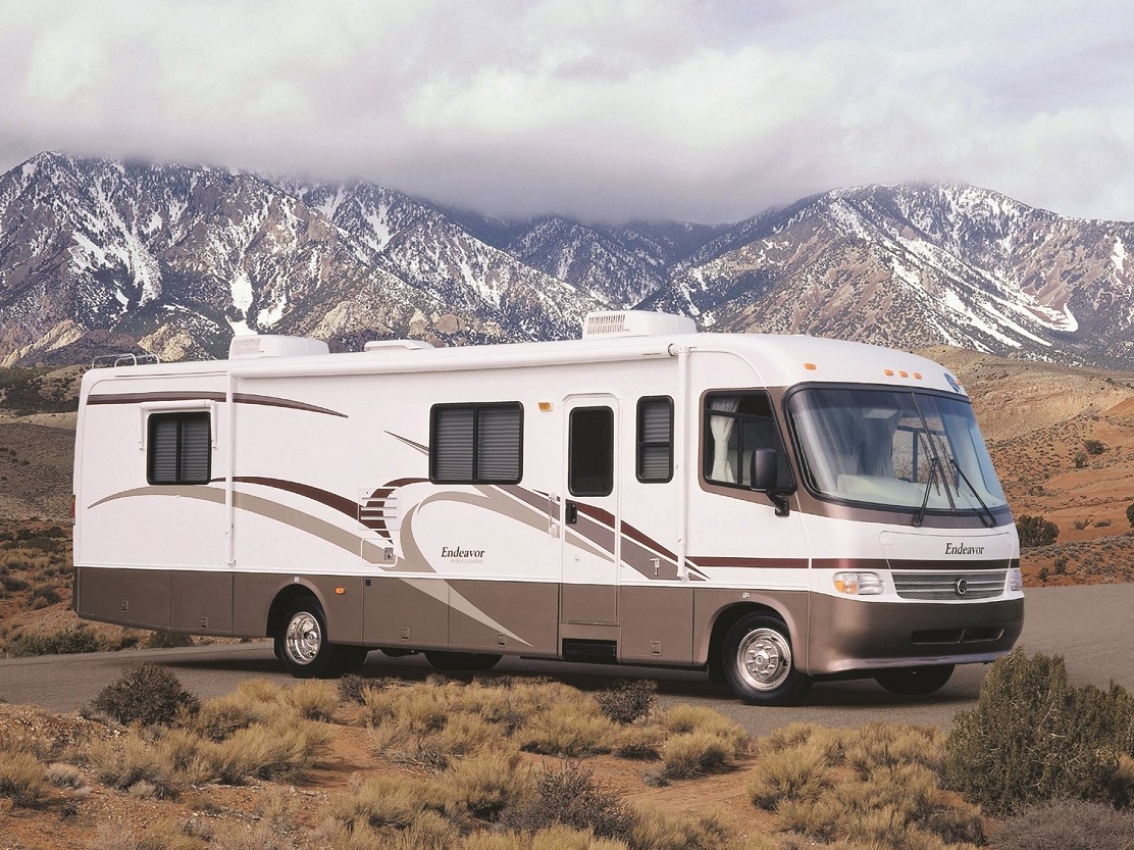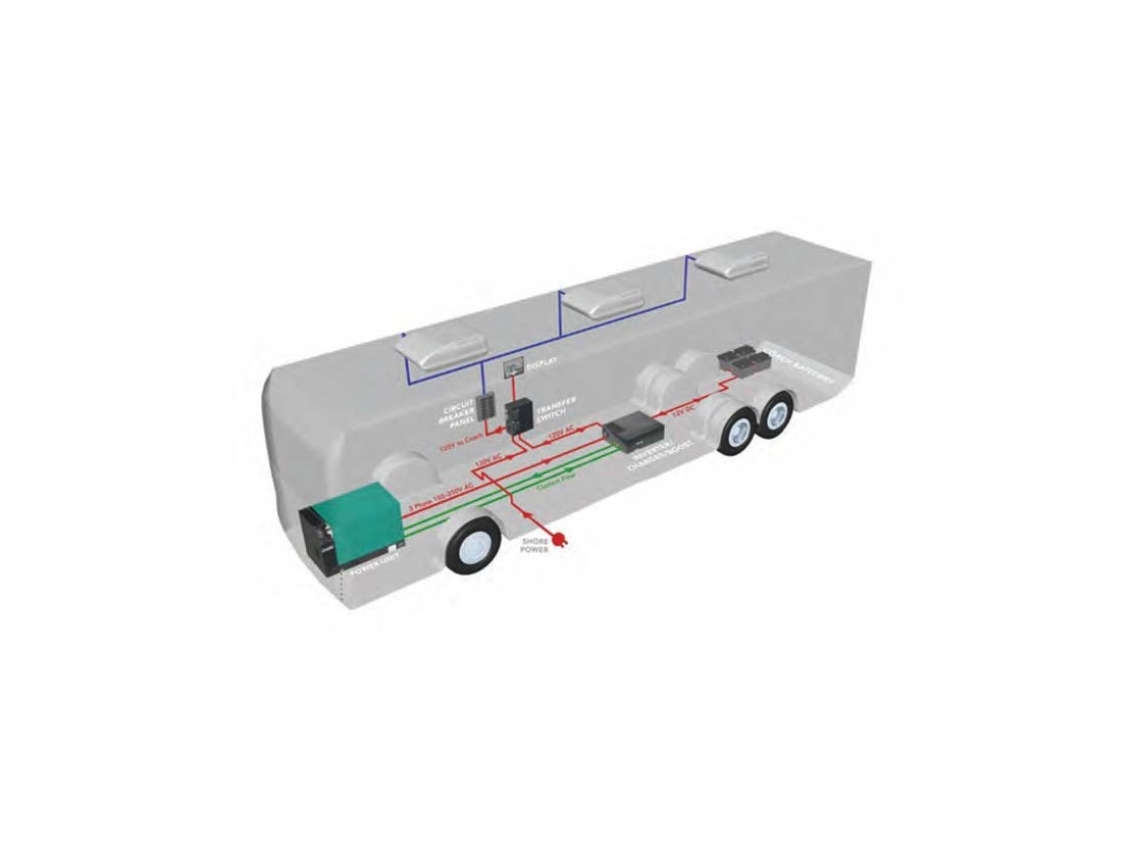RV generator power basics

Understanding power: amps, volts and watts
Amps
Amps are a representation of the amount of current flowing in a wire or conductor. While the shore power receptacle and breaker, along with the generator, determine the maximum power potential, the size of the wires and internal breakers really determines the RV’s “amp” capacity for any individual circuit and as a whole.
Volts
Volts are a representation of the amount of electrical potential present. Typically for an RV, this is 120 VAC or 120/240 VAC when running from shore power, generator or onboard inverter. When operating from batteries, the voltage is 12 VDC. The propulsion engine alternator produces 12 VDC to charge the batteries. Likewise, battery chargers charge/maintain the batteries while plugged into shore power or a generator. Many interior lights, absorption refrigerators, LP furnaces, etc., operate on 12 VDC. Modern inverters take 12 VDC and convert it to 120 or 240 AC to operate appliances when shore power or a generator is not present.
Watts
Watts are the true, “apples to apples” representation of power. It is simply calculated by multiplying voltage x amps = watts.

Most modern RVs are wired for 30- or 50-amp shore power. An important distinction with these two options is rated voltage.
- A 30-amp shore cord is rated at 120 V. Therefore, the max total power available is 3,600 watts.
- A 50-amp shore cord is rated at 240 V. The total max power available here is 12,000 watts.
This means that a typical 50-amp shore cord has close to three times greater the amount of potential power than a 30-amp shore cord. The actual power the RV will have available to use will depend on its individual breaker size, configuration and wire size designed by the manufacturer.
- An RV generator capable of matching the potential power of a 50-amp shore cord plugged into a 240 V receptacle would have to be rated at 12,000 watts, or 12 kW.
- An RV generator capable of matching the potential power of a 30-amp shore cord plugged into a 120 V receptacle would need to be rated for 3,600 watts, or 3.6 kW, at a minimum.
In order to get the most out of your Cummins generator, you need to understand how it interacts with the electric system of your RV. At a very high level, your generator is connected via the circuit breaker panel to a wide variety of loads. Two of the most important loads that will impact the performance of your generator are the air conditioner(s) and the converter or battery charger.
To understand how battery chargers, automatic generator start systems and other baseloads affect your generator, you need to be aware of three things:
- Your generator’s power capability
- How to manage electrical loads
- Battery charging times
Determine your generator's power capability
To determine what your generator can power, use the chart below to estimate the total combined watts of all the appliances, lamps, battery chargers, air conditioners and other electrical products you typically use at the same time. (All electrical appliances and lights are labeled with their power requirements expressed in watts or amps.) You can use any number of appliances simultaneously, as long as their combined wattage doesn’t exceed the electrical output of your Cummins generator or your RV’s circuit breaker rating.
Common power requirements
| Appliance | Average required wattage | Amps (120 volts) |
|---|---|---|
| Air compressor (1 HP) | 900–1800 | 7.5 – 15 |
| Air conditioner | 1200–2400 | 10 – 20 |
| Battery charger | Up to 3000 | 6 – 28 |
| Blender | 450–700 | 3.3 – 5.8 |
| Broiler | 1400–1700 | 11.6 – 14 |
| Broom / Vacuum | 1000–1440 | 8.3 – 12 |
| Entertainment system | 85 | 0.7 |
| Coffee pot | 900–1200 | 7.5 – 10 |
| Converter | 500–1000 | 4 – 8 |
| Curling iron | 20–50 | 0.16 – 0.41 |
| Dishwasher | 1200–2400 | 10 – 20 |
| Drill | 250–1000 | 2 – 8 |
| Electric blanket | 60–100 | 0.5 – 0.8 |
| Fan | 10–175 | 0.08 – 1.45 |
| Flat iron | 40–80 | 0.3 – 0.6 |
| Frying pan / Wok | 1000–1500 | 8 – 12.5 |
| Game console | 19–200 | 0.16 – 1.6 |
| Hair dryer | 1200–1875 | 10 – 15.6 |
| Iron | 1000–1800 | 8 – 15 |
| Laptop | 20–50 | 0.16 – 0.41 |
| Light bulbs | 13–100 | 0.1 – 0.8 |
| Microwave | 750–1500 | 6.25 – 12.5 |
| Radio | 50–200 | 0.4 – 1.6 |
| Refrigerator | 400–1000 | 3.3 – 8 |
| Shaver | 15–20 | 0.12 – 0.16 |
| Space heater | 750–1500 | 6.25 – 12.5 |
| Stove | 900–2500 | 7.5 – 20.8 |
| Television | 43–600 | 0.35 – 5 |
| Toaster | 800–1400 | 6.6 – 11.6 |
| Washer | 500–1500 | 3 – 4 / 15 – 42 |
| Water heater | 1000–1500 | 8 – 12.5 |
